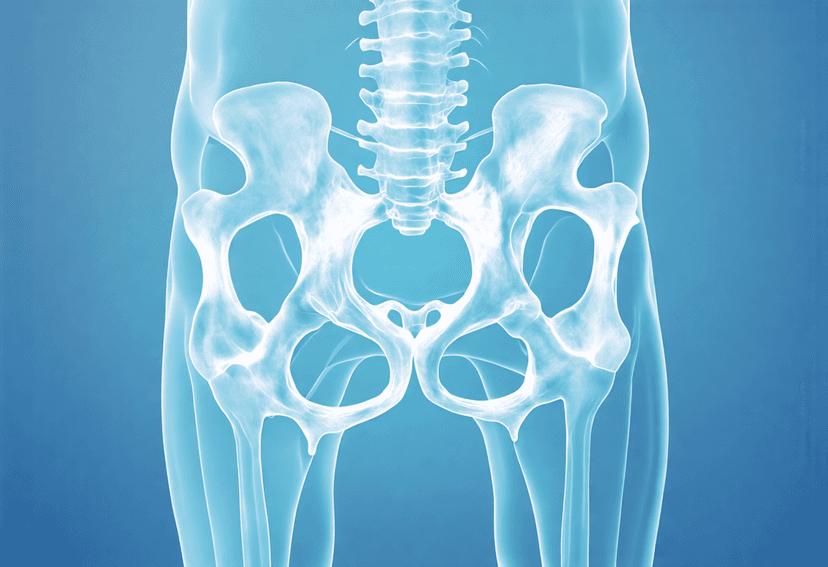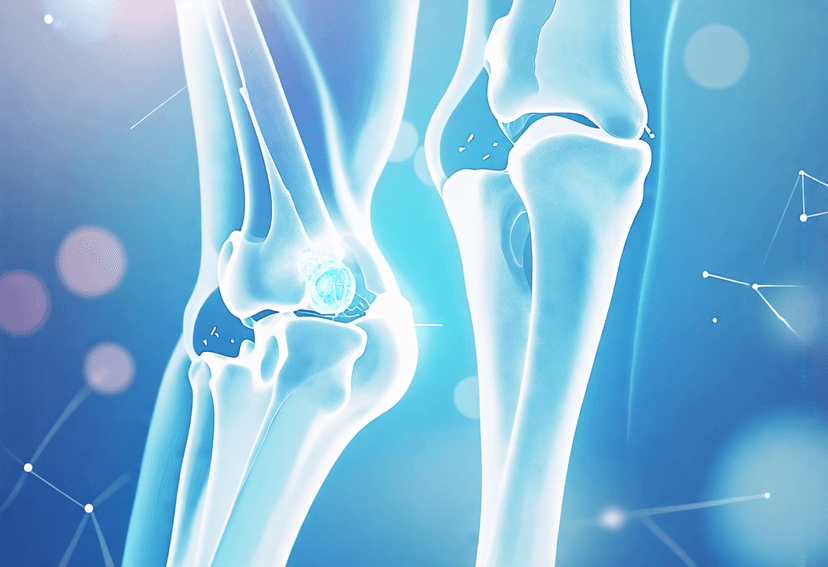
Minimally Invasive Hip Resurfacing: What You Need to Know
12 Oct, 2023
 Healthtrip Team
Healthtrip TeamIn this blog, we set sail to explore the innovative domain of minimal invasive hip resurfacing—a transformative approach to addressing hip issues with precision and care. We'll navigate through the definition, principles, and advantages of minimal invasive hip resurfacing, discovering how it stands as a beacon of hope for those seeking effective solutions. Join us on this exploration, where the waters of reduced scarring, faster recovery, and lower complications converge, guiding you towards a smoother course for improved hip health. It's not just a medical procedure; it's a journey towards restoring your natural rhythm. So, let's cast off and discover the promising horizons that await on this voyage to optimal hip well-being.
Most popular procedures in India
Minimal Invasive Hip Resurfacing
Let's break down the concept of minimal invasive hip resurfacing—it's not just a procedure; it's a philosophy grounded in preserving your natural mobility.
- Precision Resurfacing: Minimal invasive hip resurfacing involves selectively removing and replacing damaged hip joint surfaces while conserving more of your natural bone. Think of it as precision resurfacing, addressing the issue without unnecessary disruption.
- Preserving Your Essence: The principles are simple but profound: preserve as much of your natural hip structure as possible. This not only maintains the integrity of the joint but also contributes to better long-term outcomes.
Wellness Treatments
Give yourself the time to relax
Lowest Prices Guaranteed!

Lowest Prices Guaranteed!
Why might I need this?
- Preservation of Natural Bone:
- Conserves more of your natural joint structure.
- Reduced Scarring and Discomfort:
- Smaller incisions lead to less scarring and postoperative discomfort.
- Faster Recovery Times:
- Minimal disruption to tissues allows for a quicker return to daily activities.
- Lower Risk of Complications:
- Reduced trauma during surgery minimizes the risk of complications.
- Customized Fit with Implants:
- Implants are tailored to match your unique anatomy.
- Long-Term Joint Stability:
- Preserving more natural bone contributes to sustained joint stability.
Advantages Over Traditional Methods
Now, let's understand why minimal invasive hip resurfacing is gaining acclaim by comparing it to the more traditional approaches.
1. Reduced Scarring
- Gentle Incisions: Traditional methods often involve larger incisions. In minimal invasive hip resurfacing, we're talking about smaller, more delicate incisions. Picture it like leaving a smaller footprint—a subtle mark on your journey to improved hip health.
- Aesthetic Comfort: Smaller incisions mean reduced scarring, both physically and aesthetically. The goal is not just to fix but to do so with minimal evidence, ensuring a more comfortable and pleasing recovery experience.
2. Faster Recovery Times
- Swift Return to Normalcy: In the world of minimal invasive hip resurfacing, we aim for a quicker return to your normal life. The reduced trauma to muscles and tissues during the procedure facilitates a swifter recovery.
- Regaining Rhythm: Imagine your life as a rhythm, and the surgery as a momentary pause. With minimal invasive techniques, we're looking to minimize that pause, allowing you to regain your rhythm sooner.
3. Lower Risk of Complications
- Reduced Intervention, Reduced Risk: By minimizing disruption to surrounding tissues, the risk of complications is inherently lower. It's akin to taking a less complicated route, avoiding unnecessary detours on your journey to hip health.
- Preserving Joint Stability: The focus on preserving more of your natural bone contributes to long-term joint stability. It's not just about fixing an immediate issue; it's about ensuring your hip remains steady in the years to come.
In the realm of minimal invasive hip resurfacing, the goal isn't just to fix; it's to restore, to preserve, and to do so with the least possible impact on your body. It's a journey toward improved hip health that prioritizes your well-being at every step
The Procedure: Step-by-Step
A. Patient Preparation
Let's talk about patient preparation—the essential groundwork for a smooth and successful experience.
- Open Dialogue: This open dialogue involves discussing your medical history, expectations, and any worries you might have. It's like charting the course for a personalized and smooth voyage.
- Comprehensive Assessments: Now, think of this step like creating a navigational chart. The healthcare team, armed with imaging and blood tests, takes a deep dive into your health. This comprehensive understanding becomes the map that guides the surgical journey ahead.
B. Surgical Techniques
1. Incision Size and Placement
- Precision Crafting: The first step is like crafting a delicate entry point. The surgeon, much like an artisan, strategically chooses the incision size for efficiency and minimal impact. Small, yet effective - think of it as setting the stage for a smoother course through the entire procedure.
- Gateway, Not Grand Entrance: Unlike older methods with larger incisions, minimal invasive hip resurfacing is about creating a gateway. This not only minimizes disruption to surrounding tissues but also contributes to a more comfortable recovery. It's like choosing a narrow path rather than a grand entrance.
2. Bone Preparation
- Artful Sculpting: This step involves delicately shaping and refining the bone for the resurfacing process. It's like preserving the natural architecture, ensuring we maintain the integrity of the joint - a bit like preserving the landscape.
- Preserving the Landscape: By minimizing bone removal, we're aiming to maintain stability and long-term functionality. It's not just about fixing an issue; it's about preserving what's naturally there.
3. Implant Placement
- Custom Tailoring: Your implant is like a custom-made garment. The surgeon carefully selects one that fits your unique anatomy. This tailored approach isn't just about addressing issues; it's about enhancing joint function and reducing the risk of complications.
- Restoring Harmony: Finally, the implant placement is the grand crescendo. It's the carefully orchestrated move that marks the transition from addressing issues to paving the way for improved mobility. Picture it as the final note in a symphony, restoring the harmony of your hip joint.
Minimally Invasive Hip Resurfacing Benefits
- Smaller Incisions: Minimally invasive hip resurfacing involves smaller incisions compared to traditional procedures, resulting in less tissue disruption.
- Faster Recovery: Patients often experience a quicker recovery time due to reduced trauma to surrounding tissues and muscles.
- Reduced Blood Loss: The minimally invasive approach typically leads to less blood loss during surgery compared to traditional methods.
- Lower Infection Risk: Smaller incisions and reduced exposure of tissues may lower the risk of postoperative infections.
- Minimal Scarring: The smaller incisions result in less visible scarring, improving the cosmetic aspect of the procedure.
Minimally invasive hip resurfacing (MIS) is a surgical procedure that can be a good option for patients with hip arthritis who are too young or active for traditional hip replacement surgery. MIS offers several advantages over traditional hip replacement surgery, including less invasive surgery, a shorter recovery time, and less pain.
However, it is important to note that MIS is not for everyone. Patients who are considering MIS should talk to their doctor about the risks and benefits of the procedure to determine if it is right for them.
Key takeaways about minimally invasive hip resurfacing
- MIS is a surgical procedure to replace the damaged hip joint with metal implants.
- MIS is less invasive than traditional hip replacement surgery, and can offer patients a shorter recovery time and less pain.
- MIS is a good option for patients with hip arthritis who are too young or active for traditional hip replacement surgery.
- Patients who are considering MIS should talk to their doctor about the risks and benefits of the procedure to determine if it is right for them.
Most popular wellness packages
Related Blogs

Revolutionizing Neurosurgery in Istanbul: NPISTANBUL Brain Hospital
NPISTANBUL Brain Hospital is leading the way in neurosurgery with

Hip Resurfacing Surgery: A Minimally Invasive Option
Get hip resurfacing surgery in India with Healthtrip and regain

The Benefits of Robotic Surgery
How robotic surgery is revolutionizing urological procedures

Corrective Osteotomy: A Minimally Invasive Solution
Discover the benefits of minimally invasive corrective osteotomy surgery and

Transforaminal Lumbar Interbody Fusion (TLIF) and Minimally Invasive Surgery
Discover the benefits of Transforaminal Lumbar Interbody Fusion and minimally

The Benefits of Retrograde Intrarenal Surgery
The advantages of Retrograde Intrarenal Surgery for kidney stone treatment










